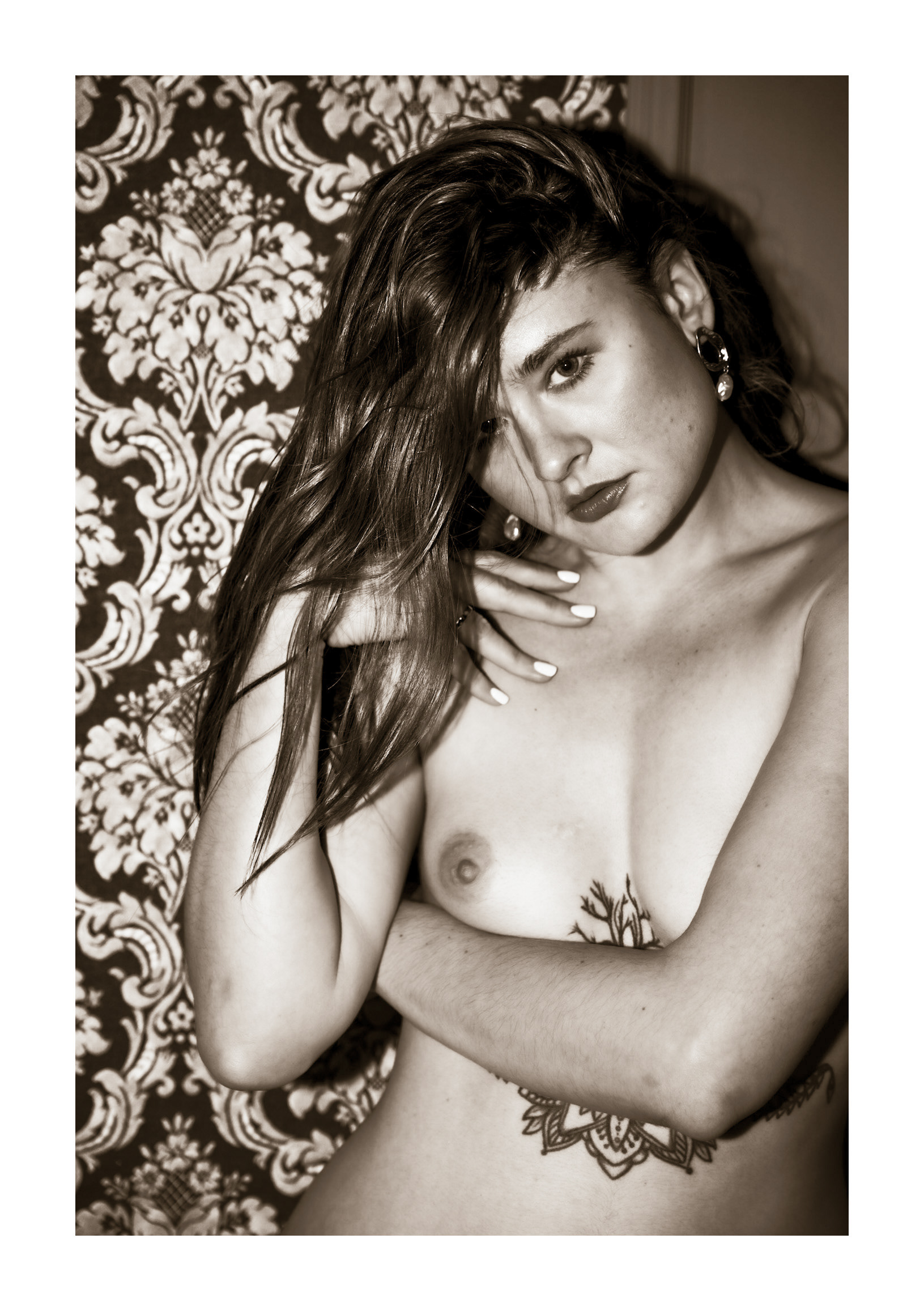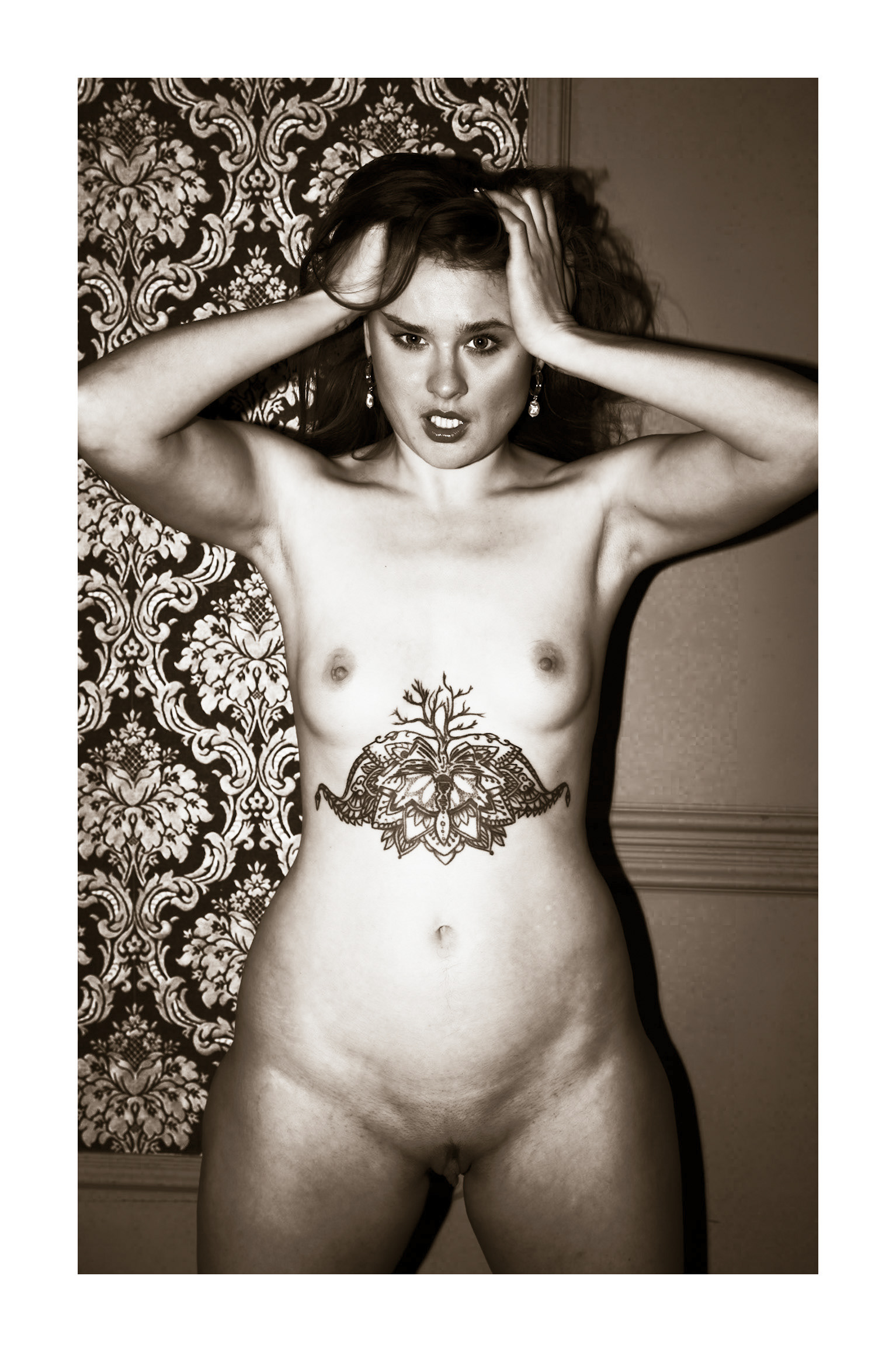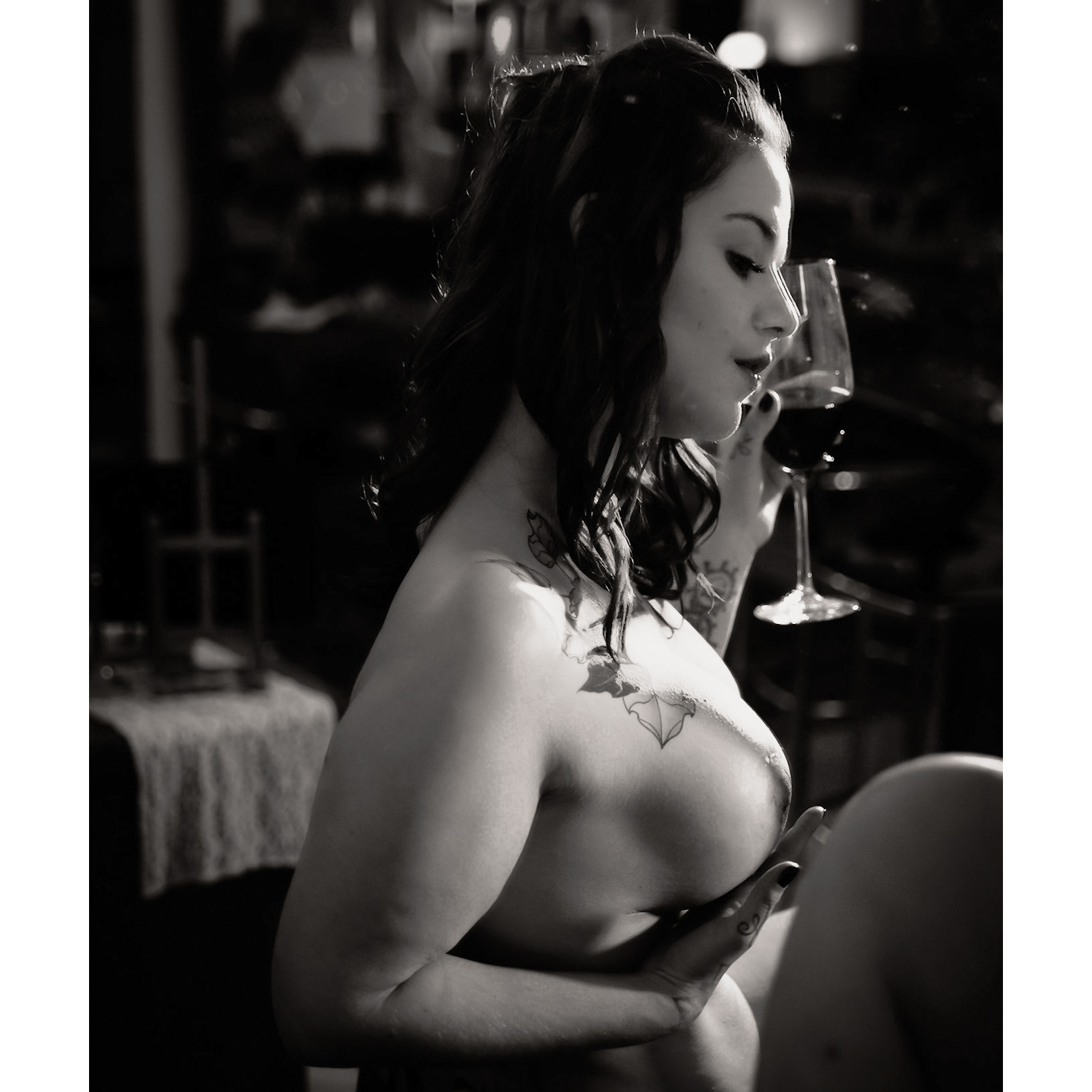Curatorial Statement
Series Title: Bodily Defiance
This series offers a condensed theatre of gendered inscription, one in which the female body is not merely present, but implicated—pressed against, adorned by, and partially dissolved into its environment. It is a study in the collapse of selfhood into surface. Wallpaper, tattoo, ornamentation: each motif repeats until it no longer frames the subject but consumes her, replacing interiority with decoration, agency with pose.
Shot with stark frontal light and a bracing tonal clarity, the images recall both the charged candor of fashion photography and the impersonal excess of domestic design. The protagonist appears nude, tattooed, ornamented—staged. Yet her gestures are not seductive in the traditional sense; they oscillate between theatrical display and an unplaceable inwardness. Her gaze is at times confrontational, at times evasive. Her body becomes less a subject of eroticism than a site for visual labor, coded and recoded by historically loaded forms—female nude, floral pattern, baroque decor.
The tattoo—placed below the breasts, symmetrical, tree-like—reads simultaneously as protection, anchor, and brand. It cannot be detached from the histories of female bodily marking: from ritual scarification to the contemporary fetish for self-curated iconography. Here, it functions not as empowerment but as evidence. Evidence of a body historicized, stylized, made legible only through repetition—of marks, of poses, of environments that speak louder than flesh.
The wallpaper, with its lush, symmetrical florals, is not mere background. It is a narrative device. It traps the subject in a feminized interiority—curated, tamed, sealed off. She belongs to this space, but not by choice. In this sense, the space becomes not a home but a womb: aesthetic, repetitive, containing, scripted for a gendered performance that begins before birth and rarely permits exit.
The final image—the most surreal—is a quiet collapse of the figure into object. Head gone, feet on the floor, torso sunken into the copper tub: a body offered to the domestic altar, half-reclining, half-buried. The bathroom, like the wallpapered wall, is both a private sanctuary and a public display case. It cleanses, conceals, stylizes—and absorbs.
The work resists final clarity. It stages the body as both protagonist and passive ornament, both narrator and surface. The gendered implications are not stated but enacted: in gaze, in frame, in posture. It is not about what femininity looks like, but what it is made to become under the conditions of looking.






List of Photos at Saatchi with Links









